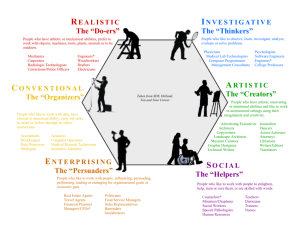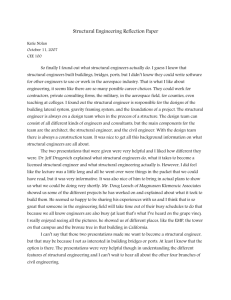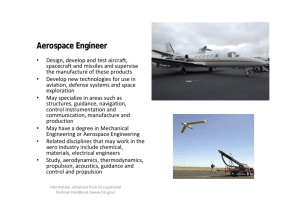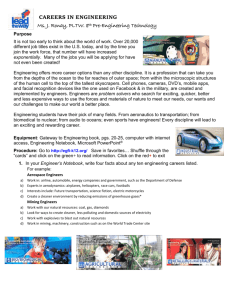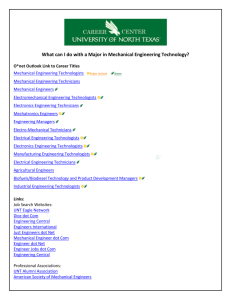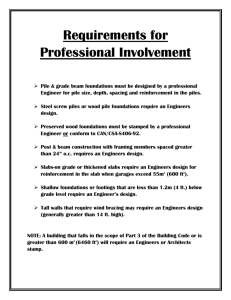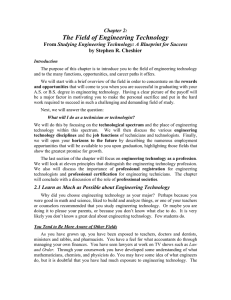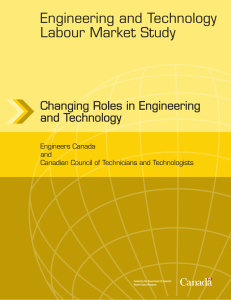ea-profiles-of-engineering-professionals
advertisement
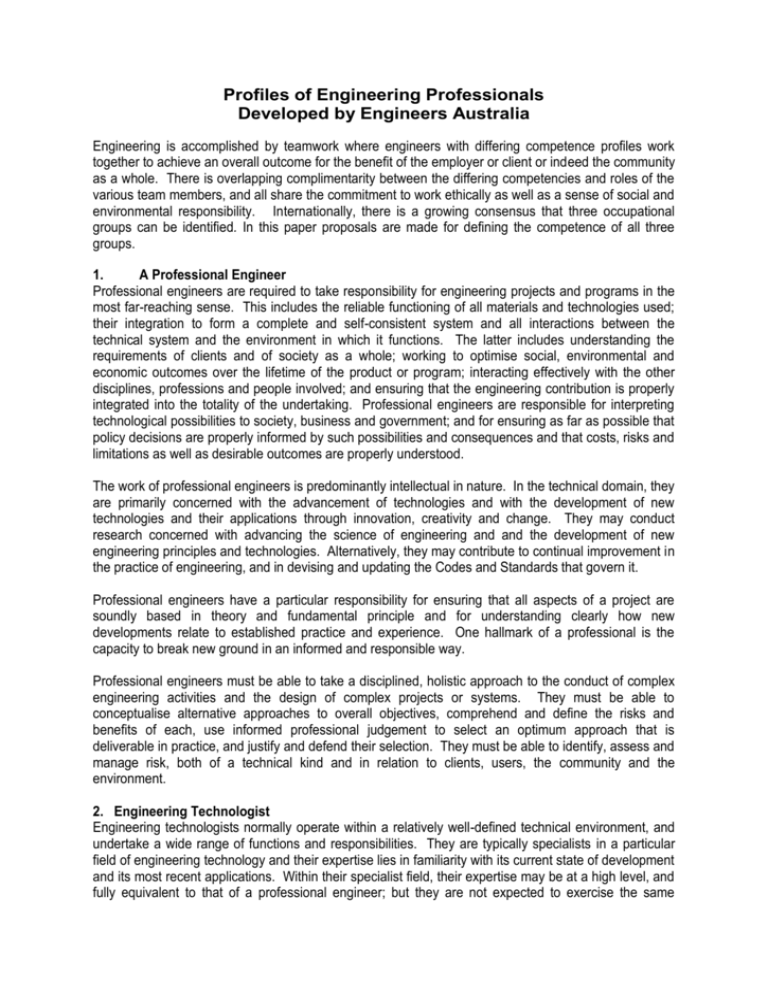
Profiles of Engineering Professionals Developed by Engineers Australia Engineering is accomplished by teamwork where engineers with differing competence profiles work together to achieve an overall outcome for the benefit of the employer or client or indeed the community as a whole. There is overlapping complimentarity between the differing competencies and roles of the various team members, and all share the commitment to work ethically as well as a sense of social and environmental responsibility. Internationally, there is a growing consensus that three occupational groups can be identified. In this paper proposals are made for defining the competence of all three groups. 1. A Professional Engineer Professional engineers are required to take responsibility for engineering projects and programs in the most far-reaching sense. This includes the reliable functioning of all materials and technologies used; their integration to form a complete and self-consistent system and all interactions between the technical system and the environment in which it functions. The latter includes understanding the requirements of clients and of society as a whole; working to optimise social, environmental and economic outcomes over the lifetime of the product or program; interacting effectively with the other disciplines, professions and people involved; and ensuring that the engineering contribution is properly integrated into the totality of the undertaking. Professional engineers are responsible for interpreting technological possibilities to society, business and government; and for ensuring as far as possible that policy decisions are properly informed by such possibilities and consequences and that costs, risks and limitations as well as desirable outcomes are properly understood. The work of professional engineers is predominantly intellectual in nature. In the technical domain, they are primarily concerned with the advancement of technologies and with the development of new technologies and their applications through innovation, creativity and change. They may conduct research concerned with advancing the science of engineering and and the development of new engineering principles and technologies. Alternatively, they may contribute to continual improvement in the practice of engineering, and in devising and updating the Codes and Standards that govern it. Professional engineers have a particular responsibility for ensuring that all aspects of a project are soundly based in theory and fundamental principle and for understanding clearly how new developments relate to established practice and experience. One hallmark of a professional is the capacity to break new ground in an informed and responsible way. Professional engineers must be able to take a disciplined, holistic approach to the conduct of complex engineering activities and the design of complex projects or systems. They must be able to conceptualise alternative approaches to overall objectives, comprehend and define the risks and benefits of each, use informed professional judgement to select an optimum approach that is deliverable in practice, and justify and defend their selection. They must be able to identify, assess and manage risk, both of a technical kind and in relation to clients, users, the community and the environment. 2. Engineering Technologist Engineering technologists normally operate within a relatively well-defined technical environment, and undertake a wide range of functions and responsibilities. They are typically specialists in a particular field of engineering technology and their expertise lies in familiarity with its current state of development and its most recent applications. Within their specialist field, their expertise may be at a high level, and fully equivalent to that of a professional engineer; but they are not expected to exercise the same breadth of perspective as a professional engineer, nor carry the same wide-ranging responsibilities for stakeholder interactions, for system integration, and for synthesising overall approaches to complex situations and complex engineering problems. The work of engineering technologists combines the need for a strong grasp of practical situations and applications, with the intellectual challenge of keeping abreast of leading-edge developments in their particular field. For this purpose they need a strong understanding of scientific and engineering principles and a well-developed capacity for analysis. The work of technologists is most often concerned with applying current and emerging technologies, often in new contexts or to the application of established principles in the development of new practice. They may contribute to the advancement of particular technologies as well. The competencies of engineering technologists equip them to approve and certify many technical operations such as calibration and testing regimes, compliance with performance-based criteria for safety, and design of components and sub-systems and of installations such as building services in circumstances that do not call for significant new development. Such certification should be fully acceptable in the public domain and should not require further endorsement by other practitioners perceived to be more highly qualified. 3. Engineering Technician Engineering associates focus mainly on practical applications. They may be expert in installing, testing and monitoring equipment and systems, in the operation and maintenance of advanced plant, and in managing or supervising tradespeople in these activities. They may be expert in selecting equipment and components to meet given specifications, and in assembling these to form systems customised to particular projects. Engineering associates are often required to be closely familiar with Standards and Codes of Practice, and to become expert in their interpretation and application to a wide variety of situations. Many develop very extensive experience of practical installations, and will be more knowledgeable than a professional engineer or technologist on detailed aspects that can contribute very greatly to cost or effectiveness in operation. In other instances, associates may develop high levels of expertise in aspects of design and development processes. These might include, for example, the use of advanced software to perform detailed design of structures, mechanical components and systems, manufacturing or process plant, electrical and electronic equipment, information and communications systems, and so on. Other examples might be in the construction of experimental or prototype equipment. Again, experienced operators in these areas often develop detailed practical knowledge and experience complementing the broader or more theoretical knowledge of others. Associates need a good grounding in engineering science and the principles underlying their field of expertise, to ensure that their knowledge is portable across different applications and situations. Context-specific training and experience in a particular job are not sufficient of themselves to guarantee generic competency. Given a good knowledge base, however, associates may build further on this through high levels of training in particular contexts and in relation to particular equipment. Aircraft maintenance is an excellent example. The competencies of engineering associates equip them to certify the quality of engineering work and the condition of equipment and systems in defined circumstances, laid down in recognised standards and codes of practice. Such certification should be fully acceptable in the public domain and should not require further endorsement by other practitioners perceived to be more highly qualified.
